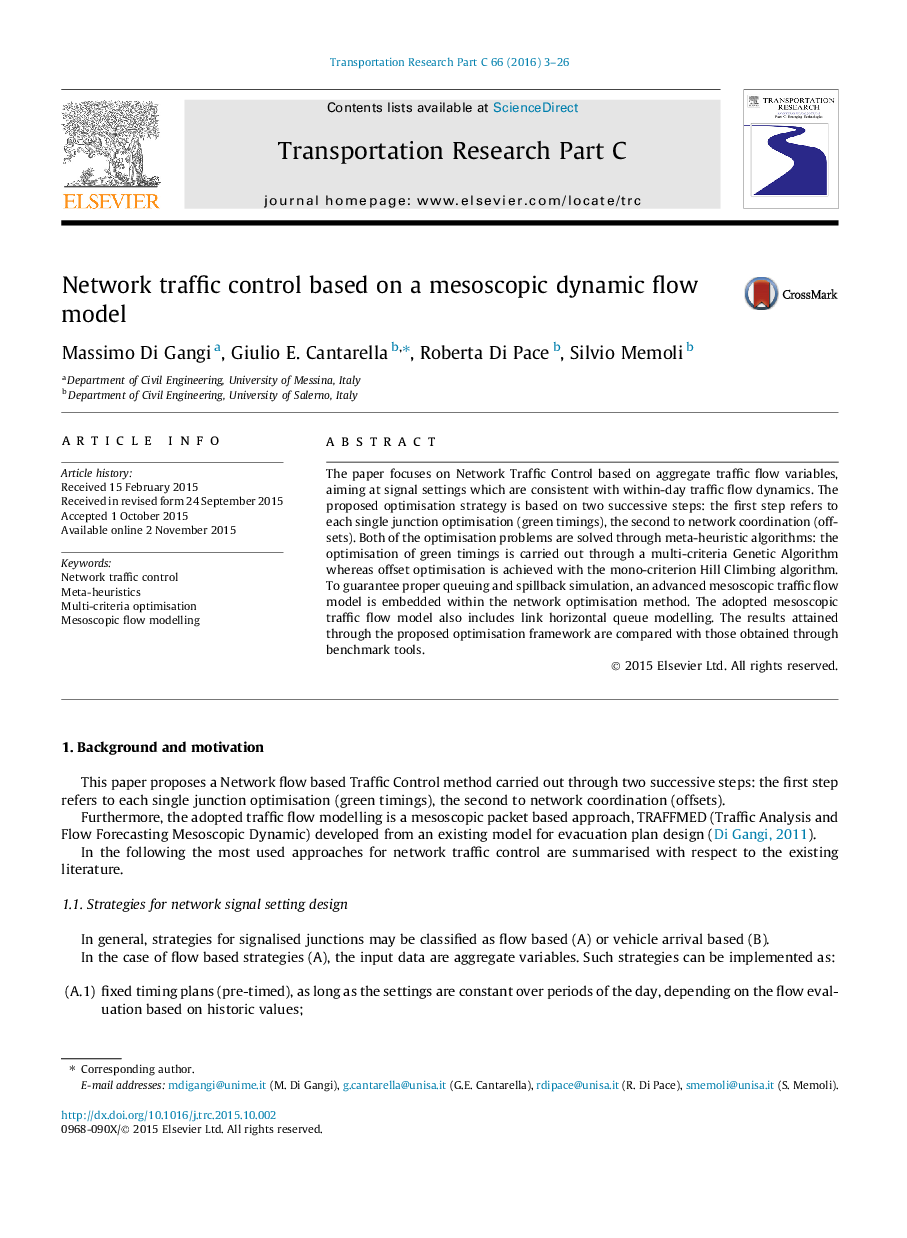| Article ID | Journal | Published Year | Pages | File Type |
|---|---|---|---|---|
| 524813 | Transportation Research Part C: Emerging Technologies | 2016 | 24 Pages |
•The proposed strategy for network traffic control allows for multi-criteria optimisation of green timings at each single junction and for mono-criterion offsets optimisation.•The embedded mesoscopic traffic flow model allows to properly simulate queue and spillback phenomena.•Optimal strategy is obtained through metaheuristics: genetic algorithms, hill climbing.
The paper focuses on Network Traffic Control based on aggregate traffic flow variables, aiming at signal settings which are consistent with within-day traffic flow dynamics. The proposed optimisation strategy is based on two successive steps: the first step refers to each single junction optimisation (green timings), the second to network coordination (offsets). Both of the optimisation problems are solved through meta-heuristic algorithms: the optimisation of green timings is carried out through a multi-criteria Genetic Algorithm whereas offset optimisation is achieved with the mono-criterion Hill Climbing algorithm. To guarantee proper queuing and spillback simulation, an advanced mesoscopic traffic flow model is embedded within the network optimisation method. The adopted mesoscopic traffic flow model also includes link horizontal queue modelling. The results attained through the proposed optimisation framework are compared with those obtained through benchmark tools.
